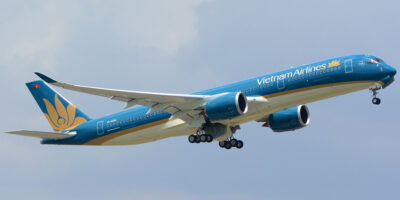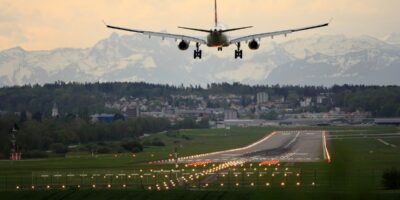Pilot Shortage: Understanding the Crisis and Its Implications
Pilot Shortage: Understanding the Crisis and Its Implications
The airline industry is facing a significant challenge: a growing pilot shortage. This issue is affecting airlines worldwide, leading to flight cancellations, delayed schedules, and increased operational costs. Several factors contribute to this shortage and understanding these can help in addressing the problem better.

Reasons Behind the Pilot Shortage
Aging workforce is one of the primary reasons. Many pilots hired in the post-Vietnam War era are reaching retirement age. In the United States, for example, pilots must retire at 65. This has led to a large number of experienced pilots leaving the industry.
Training requirements have also become more stringent. Post-2013, the Federal Aviation Administration (FAA) in the United States increased the requirements from 250 flight hours to 1,500 hours for becoming an airline pilot. This extended training period means fewer pilots enter the industry each year.
The cost of training is another factor. Aspiring pilots need significant financial resources to gain necessary qualifications. The cost can be prohibitive, dissuading many potential candidates from pursuing a career in aviation.
Additionally, the rapid expansion of global air travel has outpaced the supply of qualified pilots. Rising middle-class populations in countries like China and India, and the growth of budget airlines have led to a surge in demand for air travel, thus increasing the need for pilots.
Impacts on Airlines and Passengers
Airlines are struggling to maintain schedules and meet the high demand for flights. Cancellations and delays have become more common, frustrating passengers and damaging airline reputations. Smaller regional airlines are particularly affected because they cannot compete with major carriers for pilot salaries and benefits.
The pilot shortage also leads to increased operational costs. Airlines are offering higher salaries, better benefits, and bonus packages to attract new pilots. While this helps to some extent, it also means increased ticket prices for passengers.
Some airlines have started to reduce the number of flights or use larger planes to accommodate more passengers per flight. However, this approach has its own set of challenges, including increased fuel consumption and logistical adjustments.
Steps Being Taken to Address the Shortage
To combat the shortage, some airlines have created cadet programs and partnerships with flight schools. These programs aim to support aspiring pilots financially and provide a more streamlined path to becoming a professional pilot.
In some regions, there is a push to reassess the mandatory retirement age for pilots. By extending the age limit, experienced pilots can continue to work longer, helping to mitigate the immediate impact of the shortage.
Advanced training technologies, such as flight simulators and virtual reality, are being utilized more widely. These technologies can provide effective training in a shorter period, preparing more pilots without compromising safety standards.
Governments and industry organizations are also working to attract more people to the profession. They promote the benefits and opportunities of a career in aviation, aiming to inspire the next generation of pilots.
The International Perspective
While the pilot shortage is a global issue, its severity varies by region. Developing countries with burgeoning aviation markets feel the effects more acutely. Countries like China are investing heavily in pilot training programs, but demand still outstrips the supply of new pilots.
Many pilots from countries with less stringent training requirements are finding opportunities in international markets. This includes professionals from Eastern Europe, Latin America, and Southeast Asia, where pilot training costs and requirements are different.
Some countries are also considering bilateral agreements to allow pilots licensed in one country to work more easily in another. These measures aim to create a more fluid global pilot market, easing localized shortages.
The Future of Pilot Employment
The long-term outlook for pilot employment is changing. While traditional pilot roles remain critical, advancements in aviation technology are beginning to shift the landscape. Automation and artificial intelligence are being integrated into modern aircraft, potentially reducing the number of pilots needed for each flight.
However, human pilots remain essential for the foreseeable future. Technological changes are expected to complement rather than replace human capabilities. Pilots will still be needed to manage complex flight situations, make critical decisions, and ensure passenger safety.
Moreover, there is an emerging focus on a diversified skill set for pilots. Aside from flying skills, modern pilots need strong communication, leadership, and technical skills to handle advanced cockpit technologies effectively.
Helping Pilots Transition
As pilots retire or leave the industry, there is also a need to support their transition. Many former pilots possess valuable knowledge and experience. They could be an asset in roles such as training, advocacy, and consultancy within the aviation sector.
Mentorship programs can play a crucial role. Retired pilots mentoring the new generation can ensure that hard-earned lessons and expertise are passed down. Such initiatives not only aid individual pilots but also enrich the industry as a whole.
Summary of Key Points
- Aging workforce and retirement of experienced pilots are major factors in the pilot shortage.
- Stringent training requirements and high costs deter potential pilots.
- The rapid expansion of global air travel has increased demand for pilots.
- Impacts include flight cancellations, delays, increased operational costs, and higher ticket prices.
- Airlines and industry stakeholders are investing in training programs and advanced technologies to address the shortage.
- International cooperation and bilateral agreements may help ease localized shortages.
- Future employment may be affected by technological advancements, though human pilots remain essential.
- Support for transitioning pilots and mentorship programs can benefit the industry.



